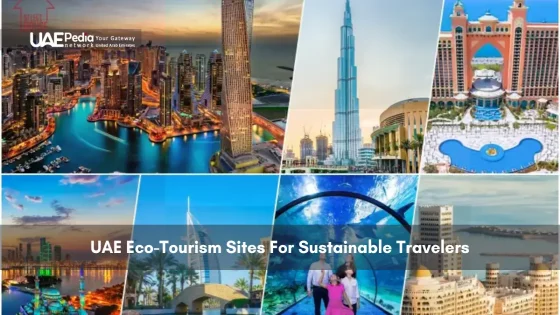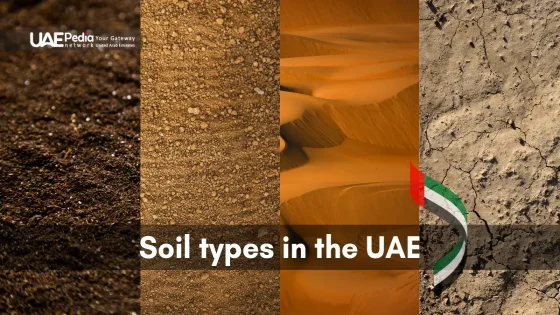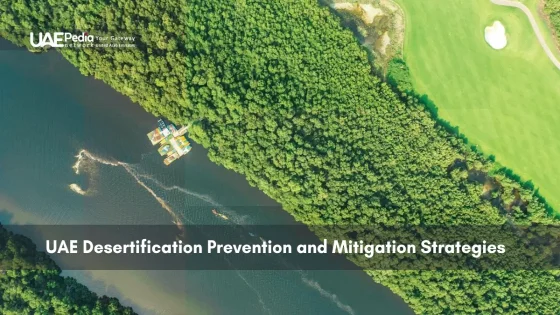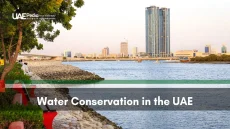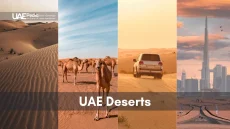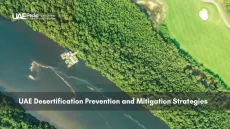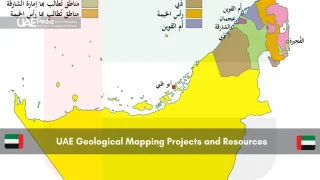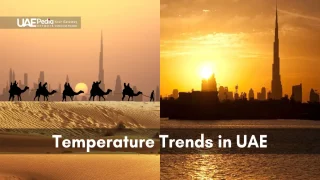What if we told you one of the world’s fastest-growing sustainable travel hubs sits amid rolling desert dunes and coral-rich coastlines? The UAE’s commitment to conservation now spans 24 protected areas—a quiet revolution reshaping how travelers engage with nature.
This isn’t just about ticking off bucket-list destinations. It’s a movement blending modern innovation with ancient landscapes—think stargazing in UNESCO-recognized reserves or kayaking through mangrove forests teeming with flamingos. From rugged mountain trails to regenerative farms, the Emirates reveal ecosystems thriving under careful stewardship.
Travelers today seek more than photos; they crave meaningful connections. Local initiatives now offer carbon-neutral stays, wildlife rehabilitation programs, and cultural exchanges with Bedouin communities. Every visit supports efforts to balance progress with preservation.
Ready to explore responsibly? Here’s what you’ll discover:
- Hidden gems where golden sands meet conservation success stories
- How to minimize your footprint while maximizing cultural immersion
- Government-backed projects turning arid zones into biodiversity hotspots
Defining Sustainable Eco-Tourism in the UAE
Imagine swapping crowded tourist traps for silent desert sunrises, where your visit helps protect fragile ecosystems. That’s the heartbeat of responsible travel here—a practice that turns vacations into partnerships with nature.
What Is Eco-Tourism?
Think of it as travel with a purpose. True eco-tourism prioritizes low-impact activities—like guided walks through protected landscapes—that leave no trace. It’s not just avoiding plastic bottles; it’s choosing experiences that actively support wildlife preservation and local livelihoods.
Take birdwatching in Al Wathba Wetland Reserve. Binoculars in hand, you’ll spot rare bird species while funding habitat restoration. As one ranger told us:
“Every visitor becomes a guardian. Your curiosity fuels our conservation.”
The Role of Conservation and Community
Preserving biodiversity here is a team sport. From mountain villages to coastal towns, communities lead efforts to protect native species. You might meet Emirati guides teaching ancient irrigation techniques or stay at solar-powered camps run by Bedouin families.
Government initiatives amplify these grassroots actions. Nearly 30% of the country’s land and sea area now falls under environmental protection. Your hikes through wadis or snorkels in marine parks directly contribute to these thriving ecosystems.
UAE Eco-Tourism Sites: A Curated List for Nature Lovers
Picture this: Flamingos wading through shallow waters as the sun dips below a skyline of modern wonders. The Emirates’ protected areas aren’t just postcard scenes—they’re living classrooms where every visit fuels conservation. Let’s unpack the gems where your curiosity becomes a force for good.
Natural Reserves and Wildlife Sanctuaries
At Ras Al Khor Wildlife Sanctuary, pink flocks transform urban edges into wild havens. Just 20 minutes from Dubai’s skyscrapers, this saltwater wetland shelters 270+ bird species. Rangers whisper secrets about migratory patterns while you peer through camouflaged viewing hides.
Sir Bani Yas Island rewrites desert narratives. Once barren, this nature reserve now hosts Arabian oryx and cheetahs roaming free. Local guides share stories of rewilding efforts as you bike through acacia forests—proof that arid zones can thrive.
Unique Landscapes and Habitats
Al Wathba Wetland Reserve stuns with its salt flats and fossil dunes. Winter brings rare greater flamingos—over 4,000 at peak season. Rangers here don’t just protect wildlife; they train visitors in habitat photography ethics.
Hatta’s mountain pools and wadis reveal another side of the region. Trek past 200-year-old irrigation systems, then cool off in turquoise waters. As one conservationist told us:
“These landscapes aren’t frozen in time—they’re evolving with our care.”
Ready to wander? These spaces thrive on low-impact activities like guided birding walks or sunrise yoga sessions. For deeper insights, explore the natural landscapes that shape this region’s ecological story. Your footsteps here don’t just tread lightly—they leave lasting impact.
Showcasing Top Destinations in the Emirates
Ever watched the sun bleed gold over rust-colored dunes while ibex tracks snake toward distant peaks? The Emirates’ protected landscapes serve drama in every direction—if you know where to look. Let’s map three realms where your travel choices directly fuel conservation wins.
Dunes That Tell Stories
Al Marmoom Desert Conservation Reserve rewrites arid stereotypes. Here, fossil dunes stand like ancient sentinels—some formations dating back 120,000 years. Sunrise camel tours reveal desert foxes darting between ghaf trees, while night hikes showcase constellations undimmed by city lights.
Jebel Jais peaks offer cooler thrills. Zip-line over vertigo-inducing canyons or hike trails lined with wild olives. “We’ve counted 17 new plant species here since 2018,” shares a Ras Al Khaimah park ranger. Proof that mountain ecosystems rebound when given protection.
Water Worlds Reborn
Abu Dhabi’s wetland sanctuaries surprise first-time visitors. At Ras Al Khor wildlife sanctuary, urban boundaries blur as flamingos preen against Dubai’s skyline. Winter brings 67 bird species—from ospreys to egrets—feeding in shallow lagoons. Book guided dawn walks to witness nature’s shift change.
| Destination | Signature Experience | Best Time to Visit |
|---|---|---|
| Al Marmoom Desert | Fossil dune photography tours | Oct-Mar |
| Jebel Jais | Via ferrata climbing routes | Nov-Feb |
| Ras Al Khor | Flamingo nesting observations | Dec-Apr |
These destinations thrive year-round through smart stewardship. As one marine biologist in Abu Dhabi’s Eastern Mangroves notes:
“Every kayak paddle through these waterways funds replanting efforts—you leave ripples that last decades.”
Adventurous Eco-Activities for the Responsible Traveler
Trade hotel buffets for sunrise bike rides where your pedal strokes fund reforestation projects. The Emirates’ wild spaces invite exploration—but only if we tread thoughtfully. Here’s how to chase adrenaline and sustainability in one go.
Dunes to Peaks: Earth-Conscious Adventures
Hatta’s mountain trails prove low-impact travel packs high rewards. Guided hikes here follow ancient donkey paths, with guides teaching Leave No Trace principles. Camp under stars at solar-powered sites, waking to birdsong instead of generators.
Cyclists find purpose in Al Qudra’s desert tracks. Rent bamboo-framed bikes to loop around ghaf tree plantations—every mile supports desert conservation efforts. As one ranger shared during a twilight ride:
“Our job isn’t to keep people out, but to show how entering gently lets nature thrive.”
Paddle-Powered Discovery
Abu Dhabi’s Eastern Mangroves transform kayaks into classrooms. Glide through tidal channels as guides decode root systems sheltering turtles and crustaceans. Sunset tours reveal bioluminescent plankton—nature’s own light show.
| Activity | Location | Eco-Benefit |
|---|---|---|
| Stargazing Camp | Al Marmoom Desert | Funds anti-litter patrols |
| Mountain Yoga | Jebel Jais | Supports trail restoration |
| Mangrove Kayak | Eastern Mangroves | Plants 5 trees per booking |
Choose operators with certified eco-credentials. Look for tours limiting group sizes and using biodegradable supplies. Your choices protect fragile mountains and waterways while creating unforgettable experiences.
Experiencing Eco-Lodges and Sustainable Retreats
Imagine waking up to the hum of solar panels powering your morning coffee, surrounded by untouched desert vistas. The Emirates’ eco-retreats prove sustainability and comfort aren’t rivals—they’re partners crafting unforgettable journeys. These havens blend cutting-edge green tech with cultural wisdom, turning stays into acts of stewardship.
Where Innovation Meets Tradition
At Al Maha Resort, luxury tents rise from the dunes using reclaimed wood and solar arrays. By day, rooftop panels harvest sunlight; by night, Bedouin-inspired designs keep spaces cool naturally. “Our goal?” shares a manager:
“Guests should relish five-star comforts knowing their AC isn’t costing the earth.”
Sir Bani Yas Island takes it further. Resorts here run on 90% renewable energy while offering front-row seats to hawksbill turtle nesting grounds. Morning wildlife drives fund conservation patrols—your sundowner cocktail protects endangered species.
Rooted in the Land
Beyond solar power, these retreats deepen connections through activities like farm-to-table harvesting. At Al Ain Oasis lodges, you’ll pluck dates with third-generation growers before cooking classes using ancestral recipes. Meals feature hyper-local ingredients—think camel milk cheese and saffron-grown honey.
For urban escapes, eco-friendly retreats near Abu Dhabi pair mangrove kayaking with seafood dinners sourced from regenerative fisheries. Every bite supports marine life revival projects.
These stays don’t just reduce footprints—they leave positive imprints. As you unwind in linen sheets washed in greywater, remember: your choice fuels a quieter revolution where travel heals rather than harms.
Exploring Eco-Tourism Beyond the UAE Borders
Ever paddled through a fjord where dolphins race your kayak? Just beyond the Emirates’ edges lie wild realms where conservation meets cultural discovery. Neighboring Oman and Yemen offer adventures that mirror—and contrast—the region’s sustainable travel ethos.
Where Mountains Meet Sea
Oman’s Musandam Peninsula dazzles with its “Norway of Arabia” nickname. Cruise through khors (fjords) past villages accessible only by boat. Responsible operators here limit engine use to protect species like spinner dolphins—your presence funds marine patrols.
Further south, Salalah’s monsoon-kissed mangroves burst with life June-September. Walk elevated boardwalks through fog-draped forests home to migratory birds. Local guides decode ancient frankincense trade routes while you sample resin from gnarled trees.
Yemen’s Socotra Island—a UNESCO gem—feels like another planet. Over 700 unique animals and plants thrive here, including dragon’s blood trees. Eco-tours prioritize small groups to minimize impact. As one conservationist shared:
“Visitors become allies. Your wonder helps us guard these living fossils.”
| Destination | Signature Experience | Conservation Focus |
|---|---|---|
| Musandam | Dolphin-friendly dhow cruises | Marine habitat protection |
| Salalah | Frankincense trail hikes | Mangrove reforestation |
| Socotra | Endemic species tracking | Anti-poaching patrols |
These destinations reward the curious while safeguarding fragile areas. Day trips from Dubai or multi-day expeditions let you balance adventure with stewardship. Pack light, tread gently, and let these landscapes reshape what you thought possible.
Government Initiatives and Conservation Efforts in the Emirates
Did you know your flamingo selfie could fund conservation patrols? Behind every thriving wildlife habitat here lies a web of strategic policies. The Emirates’ approach blends bold national frameworks with grassroots action—proving environmental care isn’t just possible in fast-growing nations, but essential.
National Strategies and Protected Areas
The Sheikh Zayed Protected Areas Network now safeguards 30% of land and sea area—a global benchmark. This isn’t paper protection. Rangers at Ras Al Khor Wildlife Sanctuary use drones to monitor bird nests, while solar-powered desalination plants keep wetlands lush. “Our mandate?” shares a Dubai conservation officer:
“Protect today while planning for 2050. Every species counts.”
Partnerships for a Greener Future
Public-private collaborations turn good intentions into results. At Ras Al Khor, corporate sponsors fund boardwalks that minimize visitor impact on birds, while entrance fees bankroll habitat restoration. Nearby, the ocean currents shaping marine reserves get monitored through university partnerships.
These efforts ripple beyond park boundaries. Hotels near protected areas now train staff as citizen scientists—guests can join dawn tours tracking migratory species. It’s proof that when governments set the stage, everyone becomes a player in nature’s comeback story.
Embracing Sustainable Travel: A Final Reflection
What if every journey could plant seeds of change? Our explorations through golden dunes, mountain trails, and whispering mangroves reveal a truth: responsible travel reshapes both landscapes and lives. Each mindful choice—whether observing nesting turtles or supporting solar-powered stays—becomes a quiet revolution.
These destinations thrive when we tread lightly. From Hatta’s ancient irrigation systems to Ras Al Khor’s pink-flocked wetlands, every ecosystem tells a story of balance. Your travel habits—choosing small-group tours or reusable bottles—ripple outward, safeguarding birds and biodiversity for generations.
The real magic? How these experiences transform us. Climbing Jebel Jais’ peaks or kayaking mangrove channels connects us to the environment in ways no photo can capture. Local partnerships prove that conservation efforts flourish when communities lead.
This year, let’s wander with purpose. Pack curiosity alongside reef-safe sunscreen. Seek lodges that give back to the sea and mountains they call home. Together, we can turn vacations into legacies—one conscious adventure at a time.
Head to Ras Al Khor Wildlife Sanctuary—a wetland oasis minutes from Downtown’s skyscrapers. Over 450 bird species thrive here, including pink flamingos that flock seasonally. Pro tip: Visit the free hides at sunrise with binoculars for uninterrupted views (and don’t forget your camera!).
Absolutely! Operators like Jubail Mangrove Park in Abu Dhabi provide eco-friendly kayaks and guided tours that follow strict “no touch” rules. You’ll glide through tidal forests while learning about carbon-absorbing mangroves—look for herons and turtle noses poking above the water!
Dubai Desert Conservation Reserve leads the charge—94 sq miles of protected dunes where you can join sunrise drives tracking Arabian oryx. They cap visitor numbers and fund anti-poaching patrols. For stargazing stays, check out their low-impact safari camps using solar-powered tents.
Ras Al Jinz Turtle Reserve in nearby Oman (easily accessed from UAE) lets you witness endangered green turtles nesting under moonlight. Summer hatchling releases are magical—kids learn conservation through ranger talks while avoiding flashlights that disorient the babies.
Hatta’s fossil-rock trails wind through villages where you can sip karak chai with locals. The new Hatta Sustainable Waterfalls project uses recycled water for wadi hikes, while eco-lodges like JA Hatta Fort Hotel offer bike rentals to explore 19th-century forts and terraced farms.
A> Teams on Saadiyat Island and Sir Bani Yas monitor nests 24/7 during nesting season (April–July). You can volunteer for beach cleanups or join night patrols (book ahead!). Hotels like Jumeirah Al Naseem even design room lighting to avoid confusing hatchlings—ask for turtle-friendly stays when booking.
